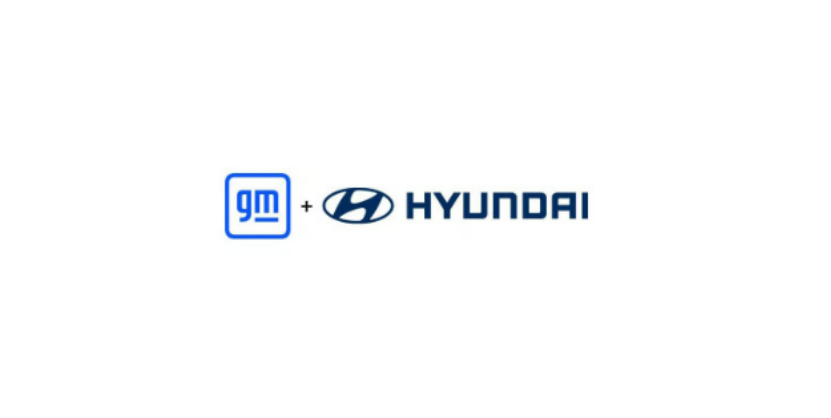Hyundai And General Motors Team Up To Develop Five New Cars
On August 7, Hyundai Motor and General Motors announced in a joint statement that, due to increasingly fierce competition in the global automotive industry — particularly mounting pressure from Chinese carmakers — the two parties will deepen their strategic cooperation and jointly develop five new models, including an electric van targeting the North American market.

Image source: Hyundai Motor
According to the joint statement released by both parties, in addition to electric vans, Hyundai Motor and General Motors will develop four new models for the Central and South American markets, including a compact SUV, a sedan, and two pickup trucks. Notably, all these models will offer flexible powertrain options, featuring either traditional internal combustion engines or hybrid systems.
The design and engineering work for new car models targeting the Central and South American markets is underway, and these models are set to be launched in 2028. The electric commercial vans are expected to be produced in the United States as early as 2028.
In terms of development division, General Motors will lead the R&D work for the midsize truck platform, while Hyundai will be responsible for the development of compact cars and electric vans. It is predicted that when these five models are fully launched, annual sales are expected to exceed 800,000 units.
The positive news drove Hyundai Motor's stock price to rise by as much as 2.1% in early trading in Seoul, South Korea, although it later retreated.
In fact, in response to the strong competition from Chinese automakers in the low-cost sector, as well as the increasing global demand for investment in traditional fuel vehicles and electric cars, Hyundai Motor and General Motors reached a strategic cooperation agreement as early as September 2024. They decided to engage in deep collaboration in areas such as vehicle and engine development, as well as clean technologies like electric and hydrogen powertrain systems.
This cooperation marks a milestone for Hyundai Motor Company, as it is the first time the company has established such a large-scale partnership with another automaker. Through resource integration, Hyundai Motor and General Motors are expected to achieve more efficient capital expenditure and manufacturing operations, while also gaining greater advantages in the procurement of raw materials and components.
As South Korea's largest automaker, Hyundai Motor has been seeking to diversify its product line to enhance profitability, thereby coping with the impact of U.S. tariffs and a global slowdown in demand. According to data from Bloomberg Intelligence, due to President Trump's tariff policies, Hyundai and Kia will face tariffs as high as 15%, which could add up to $5 billion in additional costs for them this year.
For General Motors, this collaboration signifies its determination to make a renewed push in the global market. Under the leadership of General Motors CEO Mary Barra, the company has gradually closed its operations in Australia, Europe, India, and Southeast Asia, and has restructured its struggling business in China. Through collaboration with Hyundai Motor, General Motors aims to develop smaller-sized vehicles to meet the needs of consumers who are not accustomed to driving the large trucks popular in the United States.
It is worth mentioning that the electric van project planned by Hyundai Motor and General Motors, which is expected to begin production in the United States as early as 2028, also aligns with the strong demand for electric and hybrid vehicles in the North American market. Such demand contributed to record-breaking revenue for Hyundai Motor in the second quarter of this year.
In addition, in March this year, Hyundai Motor announced an ambitious investment plan to invest a record $21 billion in the United States by 2028 to expand production capacity and create approximately 14,000 direct jobs; reportedly, $9 billion of this investment will be used to increase the plant's annual production capacity to about 1.2 million vehicles.
【Copyright and Disclaimer】The above information is collected and organized by PlastMatch. The copyright belongs to the original author. This article is reprinted for the purpose of providing more information, and it does not imply that PlastMatch endorses the views expressed in the article or guarantees its accuracy. If there are any errors in the source attribution or if your legitimate rights have been infringed, please contact us, and we will promptly correct or remove the content. If other media, websites, or individuals use the aforementioned content, they must clearly indicate the original source and origin of the work and assume legal responsibility on their own.
Most Popular
-

List Released! Mexico Announces 50% Tariff On 1,371 China Product Categories
-

EU Changes ELV Regulation Again: Recycled Plastic Content Dispute and Exclusion of Bio-Based Plastics
-

Mexico officially imposes tariffs on 1,400 chinese products, with rates up to 50%
-

Clariant Unveils Cost-Cutting Plan Details, Plans to Shut Down Multiple Plants
-

Nissan Cuts Production of New Leaf EV in Half Due to Battery Shortage






